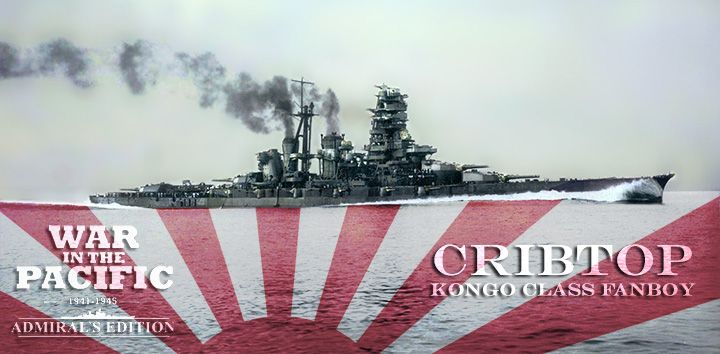wpurdom
Posts: 476
Joined: 10/27/2000
From: Decatur, GA, USA
Status: offline

|
I'm late to this party and want toget back to the original question.
One has to start with the strategy of the campaign. "Amateurs study tactics,professionals study logistics." By 1863, the logistics in the South generally, and Virginia, in particular were in horrible shape. For the previous Chancellorsville campaign, Lee had had to send off over 1/4 of his army to So. Virginia because they couldn't be supplied at the Fredericksburg line. Horses were getting in bad shape and the VIII Corps had seized most of the Shenandoah Valley. So the campaign had three objectives-to recover the Shenandoah, to take the logistic burden off of Virginia and fortify his army by living off the Northern countryside, and to open up a war of manuever to see if an opportunity for a successful battle on Northern soil opened up.
It's not like Lee had any good options. As a map exercise, sending Longstreet out West earlier was probably the best option; but it's not like the management of the war out West offered much prospect for optimism. A direct attack on Hooker would be far less promising than the situation at Gettysburg. He needed the Shenandoah bread basket to survive the fall and winter, and he needed to avoid drawing down Virginia supplies. (There was no decisive objective, the Valley was the closest thing within his capabilities.) Otherwise, he would all too likely be facing his 1864 destiny in 1863. And the best way to retake the Valley without losing Fredericksburg was to do it with overwhelming force, threatening a Northern invasion.
The drawback was that strategically, the Gettysburg campaign was a raid, not an invasion. As pointed out by CRSutton in post #69, Lee's army had no supply line; he carried limited ammo and had to disperse to forage. If forced to concentrate, he had to fight or retreat.
1. Stuart's raid - The great strategic error of the campaign was Stuart's raid, taking off all the reliable recon forces. In a rapid moving dispersed manuever, his presence was vital to being able to forage successfully without being forced into battle on disadvantageous terms.
I disagree about Lee making a strategic error in committing to a fuller battle after the first day. At that point, Lee had too choices - he could try to win and drive the Union in retreat, or he could retreat back to Virginia. With the concentration of the armies, he could not support himself off the countryside and he already had substantial numbers of wounded to worry about. The Lonstreet alternative makes no sense - Meade understood the strategic situation as well as Lee. With the Confederate army as close to parity as any time since Seven Days he wasn't going to attack a defensive Lee. As pointed out by Capt. Mandrake in #70 Meade's plan was to move into a good defensive position in the vicinity of the Army of Northern Virginia and force it to attack him or retreat. And as the actual retreat from Gettysburg, a retreat back to Virginia and across the Potomac was not risk free. Lee had parity in forces until the arrival of the VI Corps and good prospects in battle.
2. Ewell's non-attack on the 1st may have been a mistake, but I hesitate to give much blame for it. It was not without risk, and if successful, as pointed out by Capt. Mandrake, very likely would have only resulted in a withdrawal to Pipe Creek, as was seriously contemplated that evening without the attack. The attack would have only resulted in a limited victory and likely would have resulted in the same retreat to Virginia or need to attack a good Federal position.
Second day - I ascribe no blame to Longstreet. I find most plausible the account of Last Chance For Victory by Scott Bowden. Given the lack of prep by Stuart due to his absence, Longstreet did what he had to do to launch the full-bore attack, much like Chattanooga, that Lee wanted. He launched a well executed echelon attack that was executed perfectly by the I Corps and only faltered, close to success on the southern end of Cemetary Ridge when III Corps engaged.
3. Mahone, Posey, Anderson, and Powell Hill I lay the tactical failure at the feet of these commanders. Bowden/Ward make out the case that Mahone's failure was outright dereliction of duty, disobeying direct orders to advance. After the successful attack by Longstreet, points north on the Union line were weakened to stem the tide and each successive CSA echelon was successful. After the successful attack by McLaws, Anderson's division attacked each brigade in succession in the same pattern as Longstreet's attack. The first three brigades were successful - Wilcox, Lang and Wright, but Posey allowed his brigade to become dispersed and only a portion advanced to the support of Wright. Next in turn was Mahone with 1500 men who had in front of him a 1000 man Federal brigade tyring to contain Wright. First he refused Posey's request to come to his support. Then he refused the order from Richard Anderson through a courier to advance (similar to conduct by him at Seven Pines). At this point the next division under Pender was waiting its turn to attack. He made the preliminary move of sending skirmishers forward to clear the way and then headed towards Mahone to see what the hang-up was when he was taken out of the battle by an artillery fragment. And there went the last chance for victory. Had the Light Division and the two other brigades been committed at that point it appears that the south end of Cemetary Ridge had been too weakened to hold.
Of course, Anderson bears responsibility for not intervening himself when his division started unraveling and Hill also bears responsibility for his own lack of involvement - leaving his subordinates to their own devices.
Finally, back to Canoerebel's original question, Bowden et al make a plausible case that the II corps attack that day was predicated upon a successful lodgment on Cemetary Ridge by III Corps.
Of course, we would have had a better idea about all of this, had Lee not deliberately obfuscated matters in his post-battle report; he apparently was not interested in making it easy for anyone to assess blame for the outcome against anyone other than he.
But I would contend that the South's position at the outset of the 1864 campaign would have been essentially identical had Lee cut off the battle after the 1st day and retreated then. He had little to lose strategically in making one last attempt at victory. And certainly, had he cut his losses after the first two days he would have been in as good a position as retreating after the 1st day. The third day was obvious a desparate throw, reminiscent of Mavern Hill - he had trouble conceding defeat. (He wasn't the only one, see Cold Harbor, Kennesaw).
|
 Printable Version
Printable Version






















 New Messages
New Messages No New Messages
No New Messages Hot Topic w/ New Messages
Hot Topic w/ New Messages Hot Topic w/o New Messages
Hot Topic w/o New Messages Locked w/ New Messages
Locked w/ New Messages Locked w/o New Messages
Locked w/o New Messages Post New Thread
Post New Thread